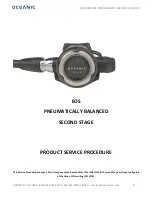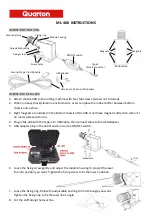
Compensation for liquid salt content
0 to 50%
Datalogging sampling time range
1 second to 8 hours,
59 minutes, 59 seconds
DO probe type
Polarographic
SD memory card capacity
1 GB to 16 GB
Power source
6 Alkaline “AA” batteries or
9-VDC adapter
Power consumption
14 mADC (normal operation, with backlight off
and SD card not saving data); 37 mADC with
backlight on and card not saving data; 49 mADC
with backlight on and card saving data
Operating temperature
32° to 122ºF (0° to 50ºC)
Operating relative humidity
0 to 85%
Dimensions of meter dimensions
7.0 x 2.7 x 1.9 in. (177 x 68 x 45mm)
Weight of meter
1.08 lb. (489g)
Dimensions of probe
7.5 (long) x 1.1 (across) in. (190 x 28mm)
Weight of probe
0.74 lb. (335g)
MAINTENANCE & TROUBLESHOOTING TIPS
Keep the probe clean and its head inside the included protective cover when not in use.
If the meter cannot be calibrated, or if its readings are erratic, first make sure that the
probe head contains enough fresh electrolyte. To fill the head with electrolyte, follow the
instructions in the “Calibrating the oxygen probe” section. If that doesn’t solve the
problem, replace the probe head/diaphragm set. In either event, the next step should be
to recalibrate the probe.
When the icon appears in the left corner of the display, it’s time to replace the six
“AA” batteries that power it (although measurements will remain valid for several hours
after the low-battery indicator first appears). Replacing the batteries requires removing
the screws that hold the battery compartment cover in place. After inserting fresh
batteries in the correct orientation, tighten the screws to secure the cover.
If the meter “freezes” (like a computer) and buttons become unresponsive, try resetting
the instrument by pushing the RESET button on its right side (callout 1-15 of Fig. 1) with
the end of a paper clip.
Remove the battery when storing this product for an extended period of time.
Do not drop or disassemble the instrument or immerse it in water.
14


































